Table of Contents:
- What type of brush should I use for chalk painting?
- Do you recommend painting kitchen cabinets with chalk paint?
- When do you have to seal a piece before painting it?
- What if you have already started to paint and you have bleed through?
- What’s the difference between milk paint and chalk paint?
- Should you thin (add water to) your chalk paint?
- How much water should I add?
- Which coats should I water down?
- What should I use to seal my projects?
learn how to chalk paint like a pro with these key tips and tricks
Chalk painting is exciting. I mean, in the mater of a few hours you can take something from trash to treasure without spending a lot. It makes us feel powerful. It’s no wonder it has taken the DIY world by storm. Still, as with any technique it has its pitfalls and challenges. But when you are armed with knowledge you will have nothing to fear and will be able to enjoy all the great reasons why we love chalk paint.
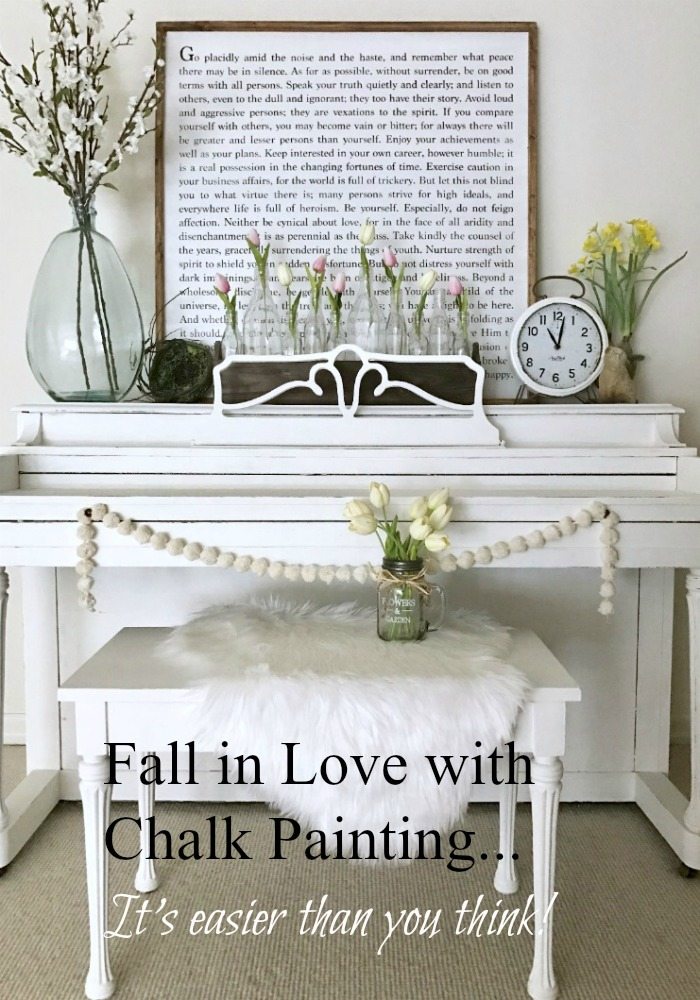
Hopefully you’ve already read our other chalk painting posts, Chalk Paint with Confidence and Get Your Chalk Painting Groove On: A Chalk Painting Tutorial. In this post we are going to answer all your chalk painting questions. We are going to address the “sticky situations” and most often asked questions so you will be armed and dangerous (with a paintbrush). Let’s get to it.
This post contains affiliate links. We thank you for your support of our blog.
Paint Color: For this project I used Amy Howard chalk paint in Ballet White.
What type of brush should I use for chalk painting?
Your brush doesn’t have to be expensive, but it does need to have certain qualities because working with a poor-quality brush will just leave you frustrated. A brush that is made of natural bristle works best. The bristles should be fairly long and flexible with a little “bounce.” Don’t choose brushes with bristles that are too short since the paint will spread well, and don’t use a brush with hard and inflexible bristles, because the paint will look scratchy. Finally, a too floppy brush will make you make you work harder to spread the paint.

A great brush will make your job easier!
 Do you recommend painting kitchen cabinets with chalk paint?
Do you recommend painting kitchen cabinets with chalk paint?
I have not chalk painted my kitchen cabinets, but I have researched the topic, and I have known plenty of people who have. Their stories as well as my research have given me a pretty strong opinion that it is NOT a good idea. It is more work and more money than going with a regular primer & latex paint or a primer and paint in one. Unless you really want a distressed look, kitchen cabinets are not the time to use chalk paint.
Here are the reasons latex paint is preferable over chalk paint for most kitchens:
- cabinets get tons of use; chalk paint doesn’t stand up as well as latex.
- so many coats of paint and sealing and resealing mean lots more work.
- a factory finish look is much more easily achieved with regular latex paint.
- latex paint will hold up better.
When do you have to seal a piece before painting it?
- Any time you have a piece that’s antique. Older cabinets and vintage furniture are notorious for bleeding through paint.
- Mahogany is THE WORST culprit when it comes to bleeding red or pink tannin.
- Knotted pine and cedar show yellow or orange bleed through.
- And ALL types of wood can be tenacious if grease/oil or water stains start surfacing from the existing finish.
What if you have already started to paint and you have bleed through?
Don’t panic. Breathe. Okay, we’ve got this. The quick fix is a sealer so the tannin or stain can’t penetrate through. It’s not a huge deal to add the sealer in between your coats if this happens.
My favorite remedy for bleed through/stains is shellac or shellac-based primer.
The right sealer is necessary with some woods, especially vintage pieces.

This is a less expensive alternative that can get the job done.
By applying any of these products, the stain or bleed through will be sealed and won’t penetrate through your next coat of paint.
What’s the difference between milk paint and chalk paint?
Chalk paint is predictable. It’s controllable. Milk paint is neither of these things. It’s an experiment pretty much every time you do it! You can’t predict how much it’s going to stick and how much it’s going to chip. Even the experts are guessing their way through. The more experience you have using milk paint the better your guessing.
Should you thin (add water to) your chalk paint?
There is no hard and fast rule that says yes you should or no you shouldn’t. That being said, there are several reasons it’s a good idea.
- It makes your paint go farther, and with the price of chalk paint, this is reason enough.
- It makes your paint go on more smoothly, one of my pet peeves regarding chalk paint.
- You have more control over the finish and the coverage.
- And finally, because it creates a smoother finish you’ll have less to sand and smooth when you’re done.
How much water should I add?
Again, no magic formula, but you don’t need to add a lot. One-part water to two parts paint is the most amount of water I would add. But play around with it and see what you prefer. It goes without saying that you should use a container that allows for plenty of mixing as you go.
Which coats should I water down?
This one is definitely preference, and I’ve heard seasoned experts say the opposite. Some prefer to have a watered down first coat and a full paint second coat. Some prefer full paint first and watered down second. My advice, since it is so personal, is to try both and see your own preference. But you can relax knowing it’s fine to choose either method.
What should I use to seal my projects?
A soft wax is what Jodie and I always use. It’s easy to apply and dries to the touch in 24 hours. It actually takes 30 days to completely cure so it is recommended to not put anything on your piece until that time just to be safe. Wax creates a protective layer and is water resistant but not waterproof. The surface can be wiped up isn’t safe from water rings and any standing water.
Jodie and I prefer the clear wax, but you can also choose light (to add a slight coloring of antiquing) or dark (which has a heavier antiquing affect).
Read our other two blog posts to complete your Chalk Painting education here on The Design Twins. The other two posts take you step by step through your painting projects.
Get Your Chalk Painting Groove On: A Chalk Painting Tutorial
Feel free to ask any unanswered questions in the comments. If they are useful, we’ll add them to the blog post to help everyone. We hope you feel more confident than ever to tackle that project you’ve been pondering. Let us know how they turn out. We just love to hear!
With love & gratitude,
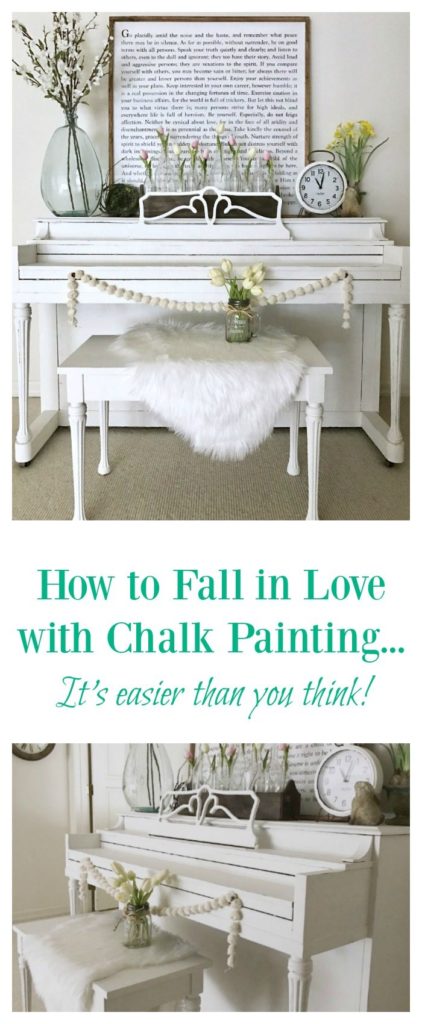
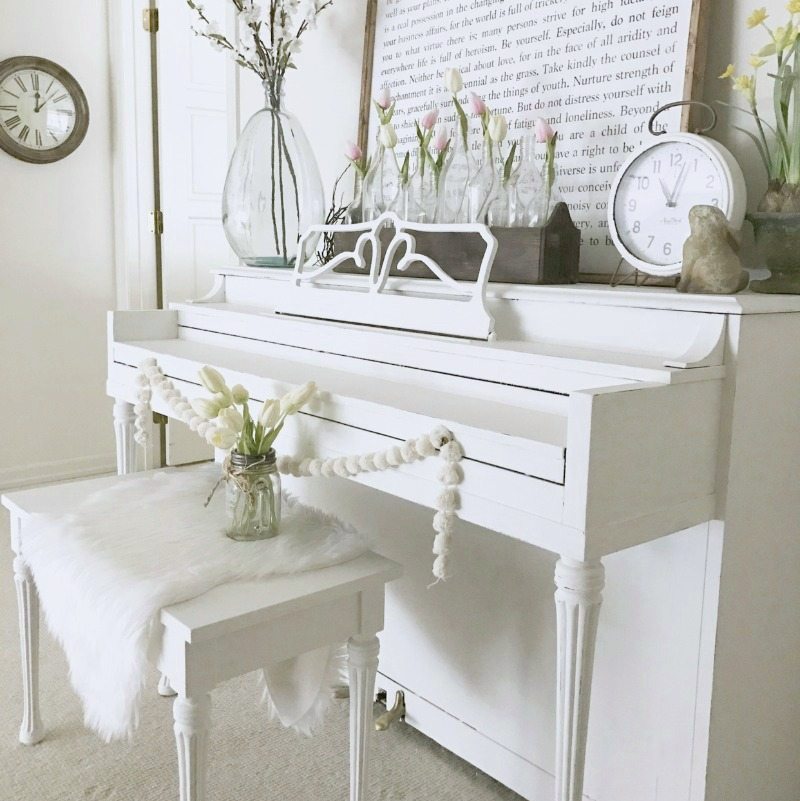

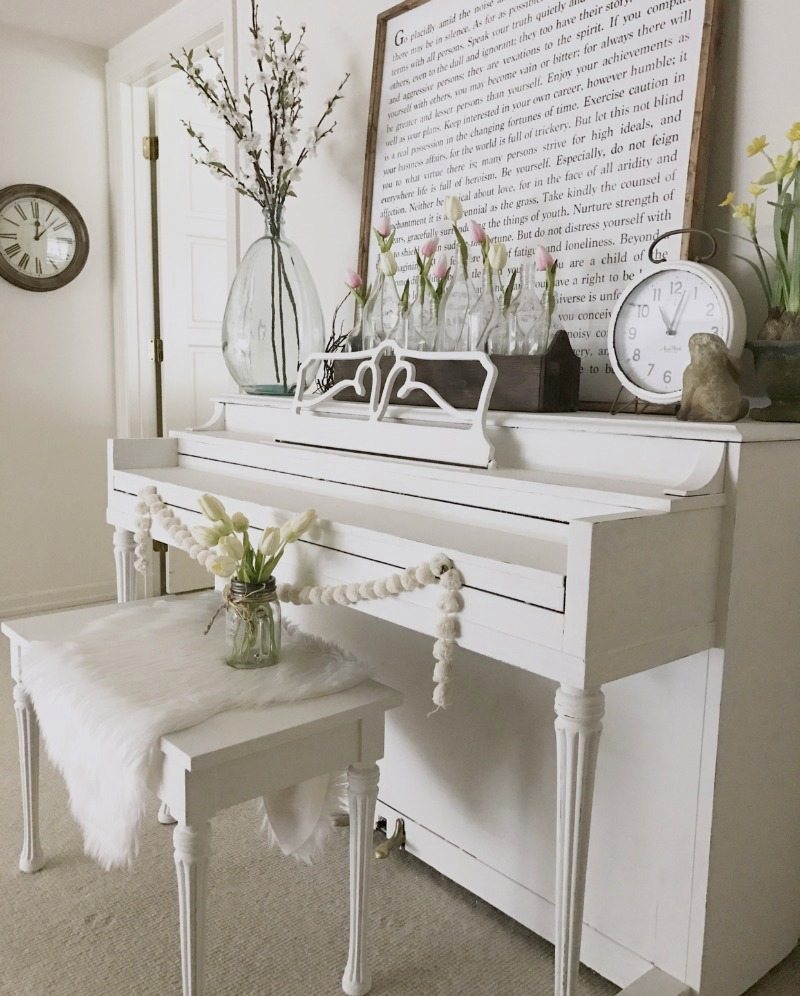





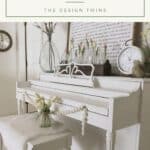
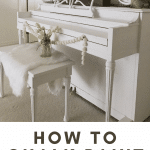
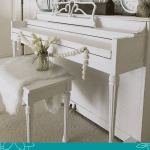
Hi,
It’s Lynne from cottagebythec…. Thanks for advice re: chaulk paint. A second coat of paint is advisable , right and then lightly sand it? I love my table already,but ran out of paint!!! Also, do you need sealer and the wax too, to finish it off?
Thanks again
Lynne
Hi Lynne! Thanks for reading our blog. We love to have you here! To confirm your ideas, yes! With chalk paint you are going to always want a second coat. Please read our other two chalk painting blog posts because they cover all these questions and more…they take you step by step. This post was just to answer specific, somewhat advanced questions. Blessings to you, Julie & Jodie
I will definitely give this a try. I love how you put on so much creativity on this
Good, Paul. We hope you enjoy chalk painting. Did we give you the warning?…it can be addictive! Ha Ha! Well, have fun with it and let us know how your projects turn out. Thank you for your kind reply, Julie & Jodie
What is the original color of this piano? Was it mahogany and do you have to sand it first? Thank you
Hi Nova, The piano was mahogany dark wood. No you don’t have to sand it at all, just seal it with a primer to prevent the tannins from showing through your paint (as I mentioned in the post). Good luck with your project.
XO ~ Julie
Where can I find this framed “Desiderata”? I love it!
Hi Dana,
The makers who made this sign I don’t believe are still in the business, but go to our blog shop. Click on any of the signs in our shop and they will take you to our friend’s shop. Message her there because she knows the sign and has told me she is happy to make it for those who ask. She is amazing and a dear person. Jodie and I love her signs and love her. Feel free to message me if you have any trouble. Blessings, Julie
I wasn’t aware that adding water to chalk paint makes it go father and spread easier! My wife is thinking about redoing some of our chair furniture to a chalk blue. I’ll have to let her know to add some water to help get more out of it!
Jordan,
Thanks for reading and we’re so glad you found a good takeaway. Hope you continue to enjoy our blog. Take care, Julie & Jodie
I don’t know if I just missed this but what color did you paint the piano? I just got a cheap piano and wanted to try it out. Love the color you guys chose. Thanks!
Suzanna,
So sorry we just updated the post to include the color! Thanks for pointing this out to us! We used the color ballet slipper from Amy Howard paints! Hope this helps! XO ~ Jodie & Julie
I am so glad I read this as I didn’t realize you can water down chalk paint. Ty
Phyllis,
We are so glad you enjoyed this post! Yes, isn’t that awesome? Let us know how your chalk painting projects go!
Lots of love,
Jodie & Julie